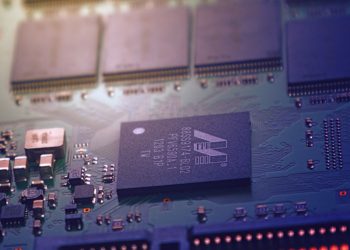In the vast world of Android smartphones, the System on a Chip (SoC) plays a crucial role in determining the device’s capabilities.
Today, the Android SoC market is predominantly ruled by four major chip brands: Snapdragon by Qualcomm, Exynos by Samsung, MediaTek, and the recently introduced Tensor by Google.
Each of these chipmakers has its unique strengths and weaknesses, contributing to a fiercely competitive environment. But the question is, which one of these is the best?
And more importantly, should you, as a user, even bother about what chip powers your phone? Join us as we delve into the intricate details of these powerhouse chipsets, comparing their performance, features, and impact on your smartphone experience.
Snapdragon: The Fan-Favorite

Qualcomm is considered king in Android chips by both reviewers and users alike, thanks to its Snapdragon CPUs. There are many different ranges of Snapdragon chips, each with different performance and meant for different price points.
At the pinnacle is the Snapdragon 800-series, which is engineered for cutting-edge performance and targets flagship smartphones. Following closely are the 700-series and 600-series, which cater to mid-range smartphones. The 400-series, on the other hand, is geared towards budget phones, typically priced under $200.
One of the reasons why Snapdragon processors enjoy such popularity is their consistent high performance compared to other Android chips.
This remains true whether we are talking about flagship chips or those meant for mid-range phones. Major smartphone manufacturers such as Samsung, Google, Oppo, Xiaomi, and OnePlus, frequently opt for Snapdragon processors in their devices.
Another distinguishing feature is that Qualcomm customizes the standard ARM cores to enhance performance and also develops its own GPU designs under the Adreno brand, as opposed to using the standard ARM Mali designs.
Moreover, Qualcomm’s extensive documentation and support make the development and porting of custom ROMs to Snapdragon-powered phones relatively easier compared to phones with Exynos or MediaTek chipsets.
However, there are also some downsides to consider. Qualcomm chips are typically more expensive than their competitors, especially in the flagship segment. For instance, in 2020 there was a notable price hike with the introduction of the Snapdragon 865, which led some OEMs like Google and LG to use mid-range chips in their flagships as an alternative.
Related Article
- Samsung’s Dream Chip: A New Era in Technology
- Apple AI Powered Quartz and Its Impact on Future Technology
Exynos: Surprising Performance

Exynos, manufactured by Samsung, is a formidable player in the smartphone chipset market. While not as widely recognized as Snapdragon, Exynos chips pack a punch when it comes to performance. Crafted by Samsung, Exynos CPUs are predominantly found in Samsung phones worldwide.
However, in certain markets like the US, Samsung opts for Snapdragon due to modem compatibility. Interestingly, Exynos chips have also graced phones from other manufacturers such as Meizu.
Now, let’s talk about performance. Exynos chips often go toe-to-toe with their Snapdragon counterparts. For instance, in 2021, the Snapdragon 888 and the Exynos 2100 were pitted against each other as the top performers. In different scenarios, each managed to outperform the other. This was also the case with the previous generation chips – Snapdragon 865 and Exynos 990.
What’s behind Exynos’s performance? Samsung tends to use more generic CPU/GPU designs compared to Qualcomm. However, it’s not shy about unleashing high-powered chips when needed. In fact, there’s speculation that Samsung might integrate Radeon GPUs in its chips in the future.
An added advantage is that Exynos chips are often more affordable than their Snapdragon equivalents. This price difference is evident when comparing Samsung phones with different chip variants.
In summary, with Exynos, you get remarkable performance which sometimes even surpasses that of Snapdragon, and often at a more wallet-friendly price.
Related Article
MediaTek: Solid Mid-Range
Moving on to MediaTek. This Taiwanese chipmaker might not be the first name that comes to mind, but it holds a secret crown.
Despite not always receiving the limelight, MediaTek is a dominant force, especially when it comes to sales figures. Surprisingly, MediaTek chips are used in 43% of smartphones globally, significantly outnumbering Qualcomm’s 24% market share.
One of the reasons MediaTek has historically been overlooked is its association with lower-end devices. Many Android enthusiasts tend to view MediaTek-powered devices as slow and inexpensive.
However, this perception isn’t entirely accurate. MediaTek has a much broader spectrum of offerings that cater to both the budget-conscious and those seeking robust performance without breaking the bank.
MediaTek’s Dimensity series is particularly noteworthy. The Dimensity chips, along with some from the Helio series, pack a solid punch in the mid-range market.
These chips are not only affordable but also provide commendable performance that is often on par with their Snapdragon counterparts. It’s also worth mentioning that major OEMs like Samsung, Xiaomi, OnePlus, and Oppo have all employed MediaTek chips in their devices.
In summary, if you’re looking for a cost-effective chipset that doesn’t compromise on performance, MediaTek is a formidable option. Their mid-range chips, especially from the Dimensity series, are deserving of more recognition and appreciation for the value they bring to the table.
Tensor: Bring In the Newcomer
Google is a new chip making company. As the latest entrant to the chipset arena, Google Tensor marks a new chapter in mobile processing. This chipset, which powers the Pixel 6 and Pixel 6 Pro, brings some unique features.
What sets Tensor apart is its particular focus on artificial intelligence, machine learning, and security. The Titan M2 chip within Tensor is a testament to this. Each element of the Tensor chip is integrated with Google’s AI technology, even extending to AI co-processors.
Now, let’s talk about performance. The Tensor chip is no slouch, as it goes toe-to-toe with some of the heavyweights in the market, such as the Snapdragon 888 and Exynos 2100. While it may lag behind occasionally, the fact that it can compete at this level is impressive for a newcomer.
However, it’s essential to note that Tensor is still in its infancy. The chipset is not entirely developed in-house, with indications that Google collaborated with Samsung during its development. This is not unusual, as even Apple began its chip journey with silicon essentially from Samsung.
Tensor’s debut has been promising, and it’s exciting to ponder what the future holds as Google continues to evolve its chipset capabilities1.
Which One Should You Get?
Well, there is no definitive answer. All these chipsets are great in their own regard. Your choice depends on what you prioritize in a smartphone – whether it’s performance, AI capabilities, cost-effectiveness, or brand preference. It’s essential to know that the CPU brand is just one piece of the puzzle in the overall smartphone experience.
Conclusion
To wrap things up, Snapdragon remains a fan-favorite for its performance and developer support, Exynos surprises us with competitive performance and cost-effectiveness, MediaTek is the underdog that deserves more credit especially in the mid-range segment, and Tensor shows promising future with AI and machine learning capabilities.
Remember, while the chipset is important, it’s not the only factor that determines your smartphone experience. Keep your priorities in check and choose what suits your needs the best.
Thank you for watching! If you found this video helpful, don’t forget to hit the like button and subscribe for more tech content. Let us know in the comments which chipset you prefer and why.

